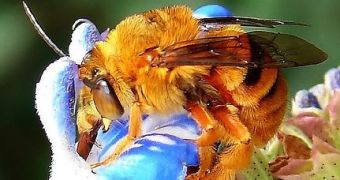A new study carried out by insect scientists Drs Melanie Norgate and Adrian Dyer, working with collaborators from Monash University and the CSIRO, found out that bees have warm drinks when cold and cooler drinks when too hot.
Researchers found out that at a range of ambient temperatures going from 23 to 30°C, bees displayed a significant preference for feeding from artificial flowers that had nectar-like solution that was warmer than the ambient temperature.
Dr Dyer said that “The bees perceived warmth as an important reward in addition to the nutritious nectar that they collect from flowers.
“However, surprisingly for the research team, when the ambient temperature reached 34°C, the bees began preferring a cooler feeder.”
Scientists then measured the bees' body temperature after they had ingested warm liquid nectar, with a special infrared camera that recorded the temperature of the body while the bees were resting, flying or drinking nectar on different ambient temperatures.
“The thermal images revealed an interesting pattern as the warm nectar helped bees maintain a body temperature (30-34°C) that is likely to be required by insects to maintain active flight,” said Dr Dyer.
He added that “just as a person might choose which type of drink to have depending on the weather, the bees also made a decision on their drink, based on what flowers might offer nectar at the ideal temperature for the particular climatic conditions.”
Dr Norgate said that this behavior of choosing nectar of different temperatures seems to be a new mechanism that bees use for an optimum body temperature for flight.
Insect specialists are already planning future work on understanding how plants control the temperature of their flowers so that the nectar would be a reward for pollinating insects.
The phenomenon might also be important for the distribution of flowers in regions where climate conditions change.
This Monash University research made on Australian stingless bees and was published in the journal PloS One, according to PHYSORG.com.

 14 DAY TRIAL //
14 DAY TRIAL //